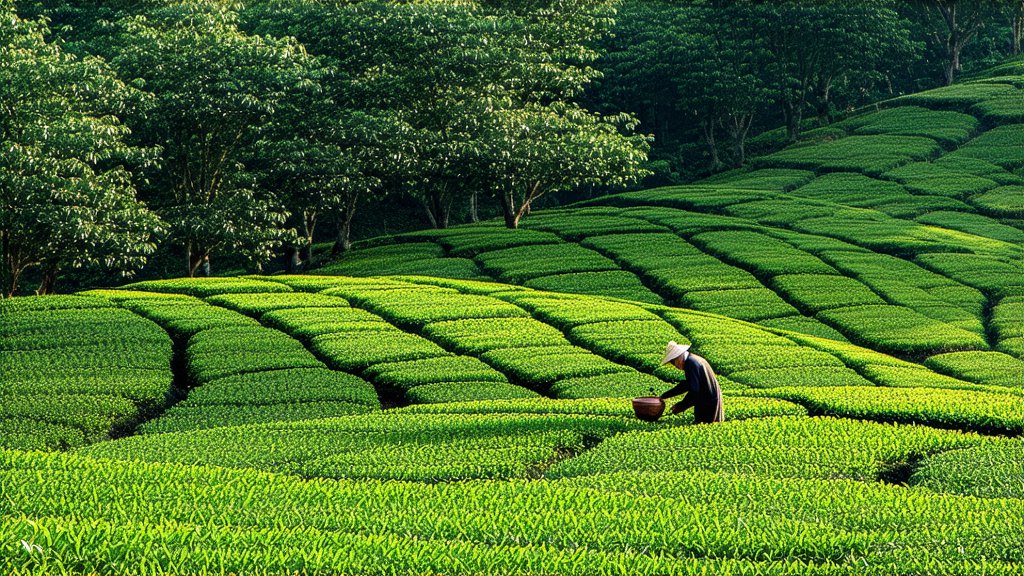
China's rich tapestry of tea culture weaves through millennia of history, offering the world an exquisite array of flavors, aromas, and traditions. Among the myriad varieties that grace the palate of tea enthusiasts globally, Tieguanyin stands as a paragon of Oolong tea excellence, hailing from the mountainous region of Anxi in Fujian Province. This article embarks on a journey to explore the depths of Tieguanyin's heritage, its unique characteristics, intricate production process, and the art of its appreciation.
A Glimpse into History
Tieguanyin, often referred to as the "Fairy Iron Buddha," boasts a history intertwined with legend and lore. Its name is derived from the local dialect, where "Tie" means iron, symbolizing its resilience and longevity, while "Guanyin" translates to the Bodhisattva of Mercy, reflecting the tea's perceived ability to soothe both body and mind. The origins of Tieguanyin date back to the early Qing Dynasty (1644-1912), with its cultivation attributed to a monk named Wei Yinzhong who discovered this extraordinary tea variety in the Wuyi Mountains. Since then, it has evolved into a symbol of China's tea craftsmanship and spiritual connection to nature.
Varieties and Characteristics
Tieguanyin belongs to the broader family of Oolong teas, which are semi-oxidized teas that bridge the gap between green and black teas. It is particularly renowned for its tightly rolled, pellet-shaped leaves that unfurl like blooming flowers when brewed. These leaves exhibit a distinctive emerald hue, and upon infusion, release a complex bouquet of floral and fruity notes, accompanied by a creamy texture and a lingering aftertaste that dances on the tongue.
The most celebrated characteristic of Tieguanyin is its 'orchid-like' fragrance, a testament to the delicate balance achieved during its processing. This aroma is complemented by a sweet yet refreshing taste, making it a favorite among connoisseurs seeking a harmonious blend of flavor and scent.
Masterful Craftsmanship: The Making of Tieguanyin
The creation of Tieguanyin is an art form that demands meticulous attention to detail and centuries-old techniques passed down through generations. The process begins with selective hand-picking of only the youngest and most tender leaves, typically during the spring harvest when the tea plants are at their peak vitality.
Once harvested, the leaves undergo a series of steps known as "withering," where they are spread out thinly to allow partial oxidation and moisture loss. This stage is crucial as it sets the foundation for the tea's flavor profile.
Next comes the "fixation" or "kill-green" process, where the leaves are quickly heated in large woks or steamed to halt oxidation. This step preserves the green color of the leaves while developing their unique aroma.
The heart of Tieguanyin's craftsmanship lies in the "rolling" phase, where skilled artisans meticulously roll the leaves between their palms or using specialized machines until they form tight pellets. This not only enhances the aesthetic appeal but also ensures even distribution of flavors during brewing.
Following rolling, the leaves undergo multiple rounds of drying and cooling, each time reducing moisture content further and concentrating the flavors. Finally, the dried tea is sorted to remove any imperfections before packaging, ready to be savored.
The Ritual of Tasting: Gongfu Cha
To truly appreciate Tieguanyin, one must engage in the traditional Chinese tea ceremony known as Gongfu Cha, or "Kung Fu Tea." This ritual emphasizes precision, patience, and mindfulness, transforming the act of drinking tea into a meditative experience.
Begin by selecting a high-quality Yixing clay teapot or a Gaiwan (a two-piece lidded bowl), as these vessels are believed to enhance the tea's natural flavors. Rinse the pot with hot water to warm it up, then add approximately 3-5 grams of Tieguanyin per 100ml of capacity.
Pour boiling water over the leaves and immediately pour it off—this initial rinse serves to awaken the tea and cleanse away any impurities. For subsequent infusions, steep the leaves for about 15-30 seconds, gradually increasing the steeping time with each brew to extract different layers of flavor.
Observe the transformation of the leaves as they unfurl, revealing their vibrant colors and releasing their captivating aroma. Sip slowly, allowing the tea to envelop your senses fully, noting how each infusion brings forth new dimensions of flavor and aroma.
Conclusion
Tieguanyin is more than just a beverage; it embodies the philosophy of harmony between man and nature, a reflection of China's profound respect for tradition and the natural world. Its intricate production process, coupled with the ceremonial preparation and consumption, elevates tea drinking to an art form that nourishes both body and soul. As you embark on your own journey with Tieguanyin, immerse yourself in its history, savor its complexities, and let it transport you to the misty mountains of Anxi, where every cup tells a story of resilience, beauty, and timeless elegance.